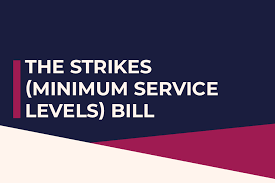Environmental laws at Laos
Laos, a landlocked country in Southeast Asia, has developed a series of environmental laws and regulations aimed at promoting sustainable development, protecting natural resources, and addressing environmental challenges. Although the country faces several environmental issues such as deforestation, pollution, and resource degradation, it has taken steps to improve its environmental governance and align its legal framework with international standards. Below are some key environmental laws and regulations in Laos:
1. Environmental Protection Law (1999, revised in 2012)
Purpose: The Environmental Protection Law is the cornerstone of environmental regulation in Laos. It aims to prevent environmental degradation, promote sustainable development, and ensure the effective management of natural resources.
Key Points:
The law sets out the basic principles of environmental protection, such as the "polluter pays" principle, sustainable resource use, and the involvement of communities in environmental decision-making.
It includes provisions for pollution control, waste management, and protection of water, air, and soil quality.
It establishes the legal framework for Environmental Impact Assessments (EIA) and ensures that large development projects undergo an assessment of their environmental impacts before approval.
The law mandates that industries and businesses implement measures to prevent pollution and mitigate environmental damage.
Enforcement: The Ministry of Natural Resources and Environment (MoNRE) is the key government body responsible for enforcing the Environmental Protection Law.
2. Law on Water and Water Resources (2017)
Purpose: This law governs the management and protection of water resources in Laos, which is crucial due to the country's reliance on rivers such as the Mekong for water supply and agriculture.
Key Points:
It regulates the allocation, use, and conservation of water resources in Laos, ensuring equitable distribution and preventing over-extraction.
The law sets standards for water quality, including provisions to safeguard rivers, lakes, and groundwater from pollution.
It promotes sustainable water management practices for irrigation, industry, and domestic use.
The law also addresses the potential impact of hydropower dams on water quality and aquatic ecosystems.
Enforcement: The Ministry of Natural Resources and Environment and local authorities are responsible for implementing this law.
3. Forest Law (2019)
Purpose: The Forest Law regulates the management and conservation of forest resources in Laos, which are vital for the country’s biodiversity, climate, and economy.
Key Points:
The law seeks to protect forests, prevent illegal logging, and promote sustainable forest management.
It supports reforestation programs, the creation of protected forest areas, and the sustainable use of forest resources such as timber and non-timber products.
The law emphasizes the importance of biodiversity conservation, including wildlife protection within forest ecosystems.
It also includes provisions for community involvement in forest management and forest restoration activities.
Enforcement: The Ministry of Agriculture and Forestry (MAF), along with local authorities, is responsible for the implementation and enforcement of the Forest Law.
4. Law on Wild Animal and Plant Protection (2008)
Purpose: This law is focused on the protection of wildlife and plant species, ensuring the conservation of Laos' rich biodiversity.
Key Points:
It establishes a legal framework for the conservation of endangered species and their habitats.
The law prohibits illegal hunting, trafficking, and trade of wild animals and plants, including protected species.
It promotes the establishment of protected areas such as national parks and wildlife sanctuaries.
It also regulates the use of wildlife for traditional medicine, ensuring that the exploitation of species does not threaten their survival.
Enforcement: The Ministry of Agriculture and Forestry, in cooperation with other government agencies, is responsible for enforcing wildlife protection regulations.
5. Law on Land (2003, amended in 2019)
Purpose: This law regulates land use, land rights, and land management in Laos, which is crucial for the sustainable use of natural resources and land conservation.
Key Points:
The law addresses issues related to land ownership, land tenure, and the allocation of land for agriculture, industry, and development.
It includes provisions for land conservation, protection of environmentally sensitive areas, and restrictions on land use that could lead to environmental degradation, such as deforestation and soil erosion.
The law aims to prevent land grabs and ensure that local communities have secure land rights.
It also promotes sustainable land management practices, such as agroforestry and organic farming.
Enforcement: The Ministry of Natural Resources and Environment (MoNRE) and other relevant local authorities are tasked with enforcing the provisions of the Land Law.
6. Environmental Impact Assessment (EIA) Law (2010)
Purpose: The EIA Law requires that all development projects that may have significant environmental impacts undergo an Environmental Impact Assessment before they can proceed.
Key Points:
The law applies to large-scale infrastructure projects, such as roads, hydropower plants, mining, and industrial developments.
It outlines the process for conducting EIAs, including public consultations and the assessment of potential environmental impacts such as pollution, habitat destruction, and water quality degradation.
The law aims to ensure that projects are designed and implemented in a way that minimizes environmental harm.
Enforcement: The Ministry of Natural Resources and Environment (MoNRE) is responsible for overseeing the EIA process, reviewing reports, and ensuring compliance.
7. Law on the Prevention and Control of Environmental Pollution (2013)
Purpose: This law focuses on reducing pollution from industrial, agricultural, and urban sources in Laos.
Key Points:
It sets standards for air, water, and soil quality and establishes the legal basis for pollution control and waste management.
The law outlines responsibilities for industries to adopt cleaner technologies and reduce emissions of harmful pollutants.
It addresses industrial wastewater treatment, the management of hazardous waste, and the prevention of soil contamination.
It also encourages the use of environmental technologies that minimize pollution.
Enforcement: The Ministry of Natural Resources and Environment (MoNRE) and other relevant agencies are responsible for monitoring pollution levels and enforcing pollution control measures.
8. Hydropower and Dam Regulations
Purpose: Laos has an abundance of river systems, particularly the Mekong River, and hydropower is a key industry. The government has implemented regulations to ensure that hydropower development is done in an environmentally sustainable manner.
Key Points:
The government mandates environmental assessments for all proposed hydropower projects to assess potential impacts on water resources, ecosystems, and communities.
Regulations ensure that hydropower projects take into account the impact on fish migration, water quality, and downstream communities.
There is also an emphasis on compensation and relocation programs for communities affected by dam construction.
Enforcement: The Ministry of Energy and Mines and the Ministry of Natural Resources and Environment (MoNRE) oversee hydropower regulations.
9. Climate Change Law (under development)
Purpose: As climate change becomes an increasing concern, Laos is working on a national framework to address its impacts and to align with international climate commitments.
Key Points:
The law is expected to focus on reducing greenhouse gas emissions, promoting renewable energy, and enhancing climate resilience.
It aims to promote sustainable agriculture, forest management, and disaster risk reduction as part of climate adaptation strategies.
Enforcement: The Ministry of Natural Resources and Environment (MoNRE) is expected to play a key role in the development and implementation of climate change policies.
10. International Conventions and Agreements
Laos is a party to several international environmental agreements and conventions, including:
United Nations Framework Convention on Climate Change (UNFCCC)
Convention on Biological Diversity (CBD)
Ramsar Convention on Wetlands
Convention to Combat Desertification (UNCCD)
These agreements influence Laos' environmental policies and laws, particularly in areas like biodiversity conservation, climate change mitigation, and sustainable land management.
Enforcement and Institutions:
Ministry of Natural Resources and Environment (MoNRE): The central government body responsible for environmental governance, policy implementation, and enforcement.
Ministry of Agriculture and Forestry (MAF): Responsible for forest management, biodiversity conservation, and wildlife protection.
Local Environmental Agencies: Regional and local authorities are responsible for the implementation and enforcement of environmental regulations at the local level.
Environmental Challenges:
Deforestation: Laos faces significant deforestation due to illegal logging, agricultural expansion, and infrastructure development.
Water Pollution: Industrial and agricultural activities, particularly in mining and hydropower, have led to water pollution in some regions.
Biodiversity Loss: Habitat destruction, poaching, and illegal wildlife trade threaten Laos' biodiversity.
Climate Change: Laos is vulnerable to climate change impacts, including changing rainfall patterns and increased flooding and droughts.
Conclusion:
Laos has developed a legal framework for environmental protection, but challenges remain in terms of enforcement, resource management, and balancing development with environmental sustainability. The government is making strides toward better environmental governance, especially by focusing on biodiversity, water, and pollution control, and aligning with international standards.









0 comments